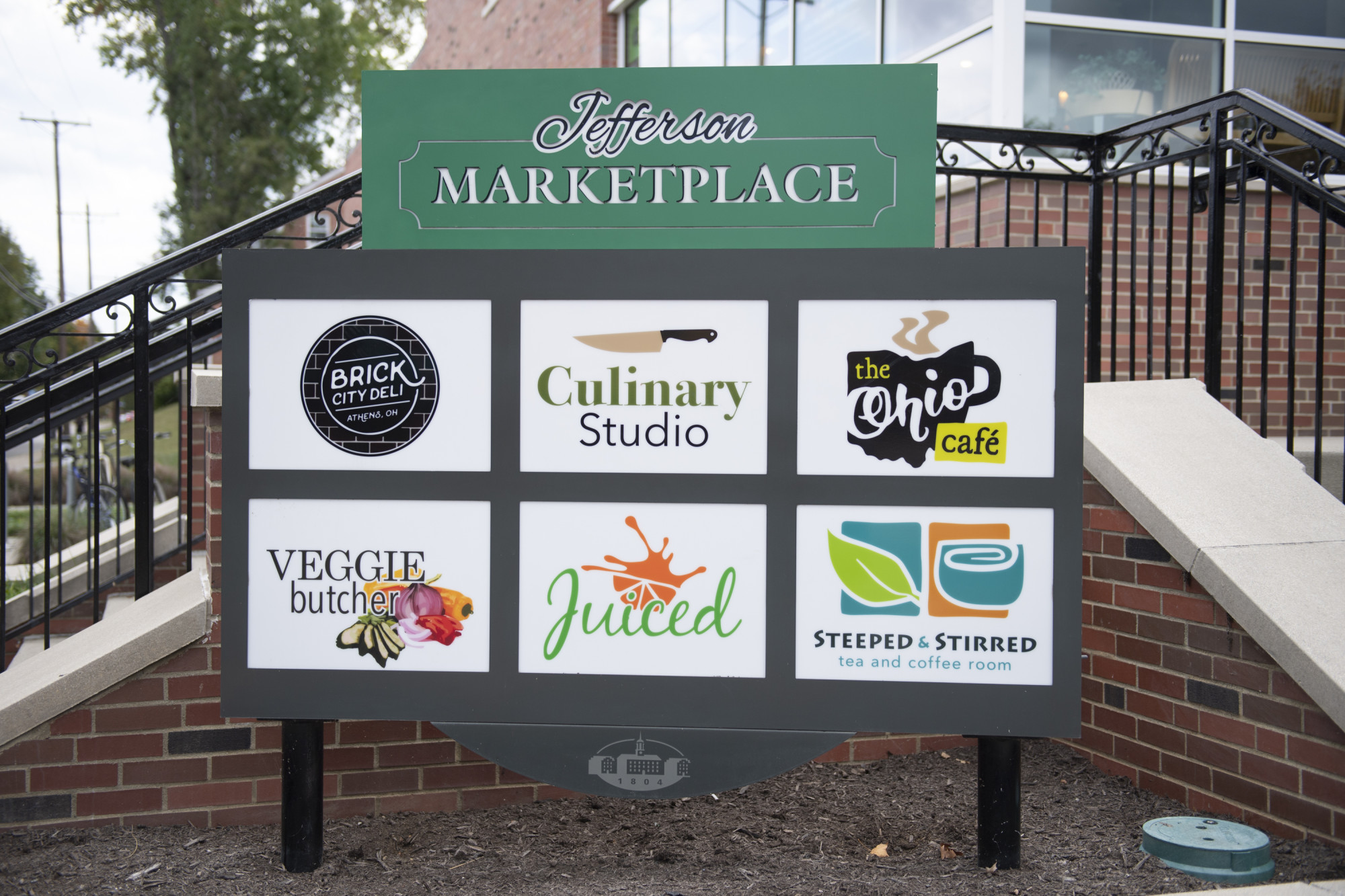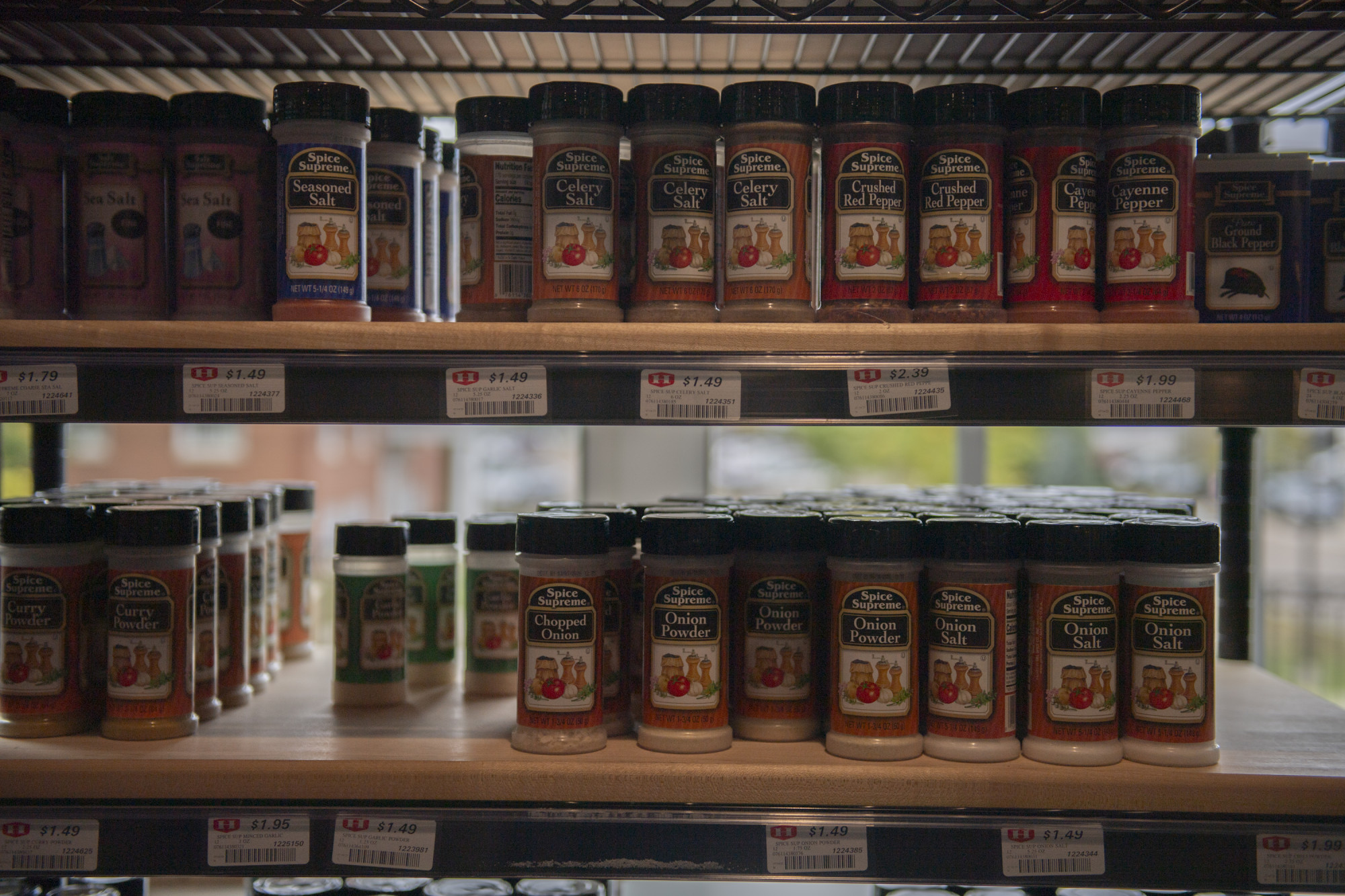Throughout his three years at Ohio University, Nate McClelland has done all he can to avoid OU’s campus markets.
As a freshman with a meal plan, he could have walked to the markets to get groceries. Instead, he rode his bike roughly four miles from his residence hall to the Walmart on East State Street and back when he needed them.
He did the same his sophomore year when he had a car. Currently, as a junior studying marketing, he still avoids the markets altogether.
He does that, he said, because he can’t justify the cost of shopping at the markets. He would much rather go to Walmart and ALDI where he believes he can find similar quality items for much less.
And he is right: OU’s campus markets, on average, charge students higher prices than their competitors in Athens.
A $15 difference
A weeklong price comparison of items at the markets and four popular grocery store chains along East State Street revealed a considerable disparity in the cost of groceries. On average, the total cost of 18 randomly selected products at OU’s markets is more than $15 higher than the average total cost of identical or nearly identical products each found at Kroger, Walmart, ALDI and Save A Lot.
Methodology:
Price data was collected in-store, using physical tags and labels on the products, over a one-week
period
from Sept. 17 to Sept. 25. Prices were also collected using OU pricing data, the OHIO Eats App,
Kroger.com,
Walmart.com, ALDI.us, SaveALot.com, CVS.com and InstaCart.com.
Products for which prices were recorded were chosen at random. If identical brands could not be located,
substitute brands were used. However, the product itself and its quantity are uniform across each of the
stores.
The cost of items, such as a half gallon of milk, 12 rolls of toilet paper, a bag of Lay’s potato chips and 15 others, totaled $82.12 at Jefferson Marketplace, OU’s largest market for students. That collection of identical or similar items totaled $81.92 at Kroger and $68.80 at Walmart.
At Save A Lot and ALDI, the prices are even lower, likely due to those stores’ model of selling “off-brand” products at cheaper rates. At Save A Lot, the combination of items cost $62.84, and at ALDI, the total came to $54.22. Between ALDI and Jefferson Marketplace, the variation is almost $28.
Price differences among the markets and stores have not gone unnoticed by students, especially McClelland. On rare occasions, he shopped at the markets, but he said he only did so because his friend was offering to pay. Otherwise, he opted for a trip elsewhere.
“The reason I don’t even shop in the (markets) to begin with is because I don’t want to pay the high prices of the food there,” he said. “I got the traditional (meal) plan to save money and then I shop at Walmart or ALDI for snacks and stuff like that.”
Grocery or convenience store?
Though the campus markets and area grocery chains sell similar products, it doesn't make sense to compare them, said Kent Scott, associate director of auxiliaries operations at OU. He believes students should view the markets as convenience stores, not grocery stores.
One reason for that is the university will never be able to compete with worldwide chains like Walmart or Kroger because those chains are able to buy products by the pallet, which saves them money, Scott said. The university’s buying power isn’t nearly as large as those stores, meaning its prices must often be higher.
Additionally, he pointed out the campus markets carry items in “convenience” quantities to better accommodate the population they serve: students living in residence hall rooms.
“We probably beat out a lot of the gas stations or the convenience stores,” Scott said. “We probably beat CVS out on a lot of things.”

Photo by Megan Van Vlack
He is correct. In the 18-item comparison, the total cost at CVS was $104.02, which is over $20 more expensive than Jefferson Marketplace. CVS operates primarily as a pharmacy, which may account for its higher-priced grocery items.
Scott also referenced the convenience of the markets’ locations around campus as an overall bargain for students.
“No student really has to have a car to go to buy from our markets,” he said. “They don't have to travel, they don't have insurance, they don't have gas, they don't have any investment in a vehicle to go somewhere. They can go out of their dorm room, right down to the market and be back in 10 or 15 minutes.”
How are prices set?
Each spring, OU contracts with several of its vendors to inform its annual pricing strategy by comparing prices at local grocery stores, including Walmart, Kroger and Seaman's Cardinal Super Market, located at 305 W. Union St., as well as to other colleges in the state, Scott said. OU’s primary vendor is wholesale company H. T. Hackney, and other vendors, including Frito Lay and Pepperidge Farms, set their own prices for the university to use.
The university then shifts prices up or down while most students are away for the summer. Once those prices are locked in, they stay the same for the entire year to keep them cohesive for students, Scott said. When vendors raise prices in the middle of the year, the university must absorb those increases until prices can be adjusted during the next price comparison.
Kristin Mullins, president and CEO of the Ohio Grocers Association, said grocers of every size across the state have had to raise prices in the aftermath of the COVID-19 pandemic to account for supply chain disruptions, the rising costs of raw materials and labor needs.

Photo by Megan Van Vlack
Those increases tend to disproportionately affect smaller retailers such as family-owned grocery stores or campus markets, Mullins said. That is because large grocery chains are better equipped to absorb the additional costs. If smaller stores don’t do the same, they risk losing customers to competitors.
“(Grocers are) very competitive,” she said. “We're very price-conscious, and a lot of times, retailers will even take a loss on some of those main items to make sure they can maintain their customer base.”
Occasionally, university markets will run sales or promotions near the end of the fall and spring semesters to try to remove excess inventory of select items. However, prices don’t increase during the year, Scott said.
Sarah Griffin, a spokesperson for Save A Lot, said all stores are owned and operated by independent licensees who are wholly responsible for setting store prices. Save A Lot’s corporate offices provide guidance, though it is up to the independent owners to choose what the prices are.
“Many different factors may go into pricing at the store level, from the wholesale acquisition price, to nearby competition, seasonality or market preferences and needs,” Griffin wrote in an email. “Most stores will offer promotional pricing on key items, lowering prices temporarily — usually a week at a minimum, but that can vary.”
She also said the owner of the Athens Save A Lot publishes promotional pricing advertisements every two weeks.
Corporate representatives from Kroger, Walmart, ALDI and CVS did not respond to requests for comment on their prices and pricing policies.
Are students deterred?
Even with higher prices at the markets, droves of students utilize them each academic year. In Fiscal Year 2023, Jefferson Marketplace made $8.8 million in gross revenue, according to university data. OU’s two other markets, Boyd and Nelson, grossed $6.2 million and $5.3 million in sales, respectively.
That revenue translated to $5.1 million in profit for Jefferson Marketplace, $4.5 million in profit for Boyd and $3.9 million in profit for Nelson during FY23. Much of that profit — about $12 million yearly from Culinary Services as a whole — is returned to students in the form of scholarships and other contributions, Scott said.
Sales at the markets come from a variety of sources, as they allow students to use Bobcat Cash, credit or debit cards or Supplemental Nutrition Assistance Program benefits. With the flex meal plan option, students may also use meal swipes which are equivalent to $6.75 per swipe. However, all campus markets are cashless.

Photo by Megan Van Vlack
Abbie Heiden, a sophomore studying marketing and management, uses her meal plan swipes at the markets almost daily. She often doesn’t exhaust her allotment of meal swipes during the week, so spending them at the markets is a good way to ensure they don’t expire, she said.
“I definitely would not spend my own money there just because a lot of the stuff is very overpriced,” Heiden said. “I would rather drive and go to Walmart and just stock up on stuff.”
McClelland said he understood the inability of the markets to compete with area grocery stores and will occasionally pay slightly higher prices for certain products. Still, the difference in prices is his largest consideration when shopping, especially for items he considers to be “essential,” like loaves of bread.
“It’s not necessarily that things are more expensive — it’s how much more expensive,” he said.

